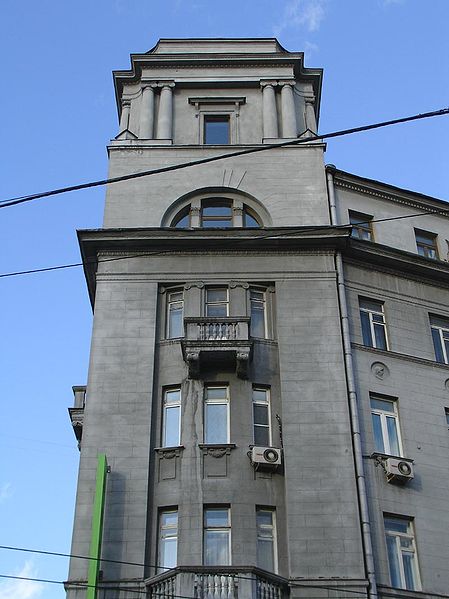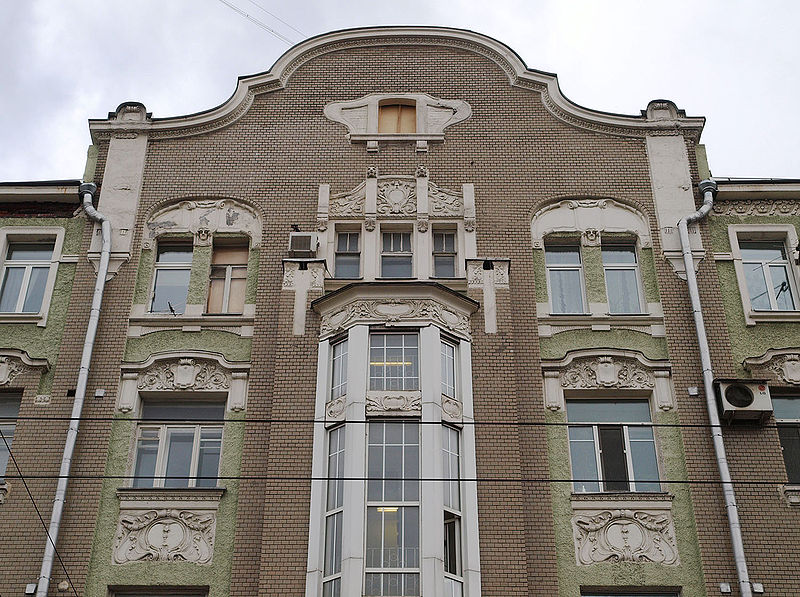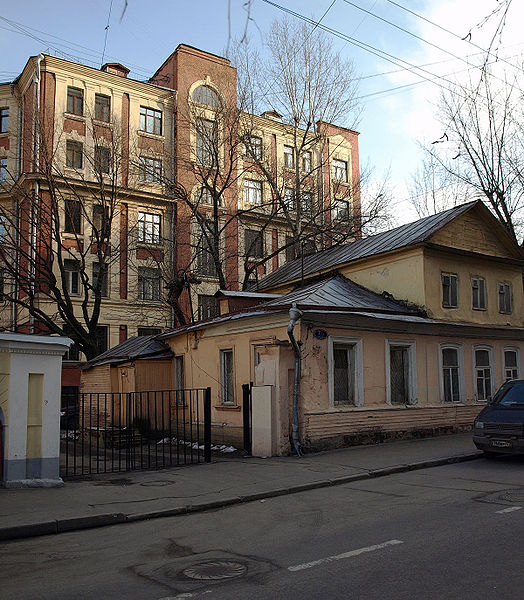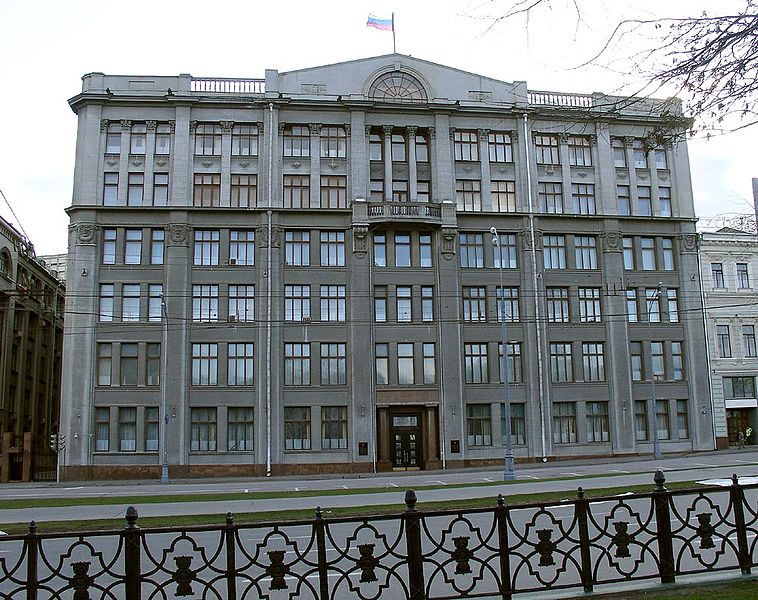<Back to Index>
- Architect Alexander Nikanorovich Pomerantsev, 1849
- Architect Vladimir Vladimirovich Sherwood, 1867
PAGE SPONSOR
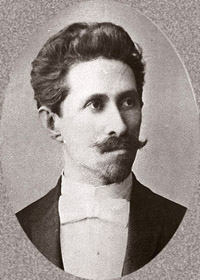
Alexander Nikanorovich Pomerantsev (Russian: Александр Никанорович Померанцев, November 11, 1849 - October 27, 1918) was a Russian architect and educator responsible for some of the most ambitious architectural projects realized in Imperial Russia and Bulgaria at the turn of the 20th century. An accomplished eclecticist, Pomerantsev practiced Art Nouveau, Byzantine, Russian Revival styles and collaborated with leading structural engineers of his period in creating new types of commercial buildings.
Pomerantsev was born in Moscow and graduated from the Moscow School of Painting, Sculpture and Architecture in 1874. He furthered his education at the Imperial Academy of Arts (1874 – 78), winning the Academy scholarship for a five year study tour of Italy, France and Switzerland (1878 – 1883). In 1887 he was awarded the title of Academic of Architecture for his study of Cappella Palatina (1887, revised edition 1911).
The first buildings by Pomerantsev were built in Rostov-on-Don; the block-sized Moskovskaya Hotel (1885, now City Hall) and Gench Building (1883) were at that time the largest structures in the city. These building followed the European eclectic tradition.
In 1889 Pomerantsev won an open competition to design the Moscow Upper Trading Rows (now GUM) on Red Square, his first large, and perhaps his most conspicuous project. It was "a turning point in Russian architectural history, not only because it represented the apogee of the search for a national style but also because it demanded advanced functional technology applied on a scale unprecedented in Russian civil architecture." Pomerantsev provided overall planning and architectural design, Vladimir Shukhov – structural design. According to William Craft Brumfield, "that the enormous Upper Trading Rows functioned, if imperfectly, is a tribute both to Shukhov's design and to the technical proficiency of Russian architecture toward the end of the century. The use of reinforced concrete for the interior walls and vaulting eliminated the need for thick masonry support walls and provided the space for circulation and light. For maintenance, there was a network of basement corridors, beneath which was a subbasement with heating boilers and an electrical generating station. Every element of professional architecture, from educational institutions to the open competition system, contributed to the project." Critics noted the disjunction of functional concrete and steel structure and elaborate Russian Revival styling that consumed 40 million bricks. While the upper floor galleries benefited from Shukhov's skylights, lower level suffered from inadequate ventilation, and, as a result, demand for shop space in the building did not meet the expectations.
In 1895 Pomerantsev was appointed chief architect of the 1896 All Russian Exhibition in Nizhny Novgorod, an event heralded as the guiding light for the upcoming 20th century. Master plan and principal pavilions of the exhibition are credited personally to Pomerantsev. Most pavilions relied on novel steel frame load bearing structures designed by Shukhov; they "represented the most advanced use of metal frame construction for their time and possibly the first use of a metal membrane roof" (Shukhov Rotunda). Pomerantsev's Pavilion of Arts was based on traditional structure, but stylistically predated Charles Girault's Petit Palais (1900) and is considered the forerunner of emerging Russian Art Nouveau. When the Pavilion was eventually torn down, its framing and finishes were reused for the People's House theater in Saint Petersburg.
Around 1900 Pomerantsev joined
the team of engineers and architects (Peter
Rashevsky, Lavr Proskuryakov, Nikolai Markovnikov) of the Moscow
Smaller Ring Railroad, a 54 kilometer ring freight
line around the city. Pomerantsev provided architectural
design to 20 stations of the Ring, employee housing,
warehouses, roundhouses and water towers, as well as to two of
Proskuryakov's bridges (now demolished, Andreyevsky Bridge and Krasnoluzhsky Bridge). Regular traffic on the Ring
commenced in July 1908. Station designs by Pomerantsev
mixed motifs of Vienna Secession, Victorian
Gothic and
traditional eclectisism leaning to neoclassicism yet were
clearly styled as a cohesive ensemble. All were built in
unfinished red brick with white decorative inserts in
line with industrial
architecture of the
period.
Pomerantsev lost the 1893 – 1894 competition for the Alexander Nevsky Cathedral in Warsaw to Leon Benois; both architects filed Russian Revival proposals, however, Pomerantsev leaned to "red brick" churches of Alexander II period covered with ornamental cliches and crowned with Thon - styled dome; draft by Benois was a refined nod to Vladimir Rus architecture. In 1907 - 1911 Pomerantsev designed the new building for Moskovsky Rail Terminal, retaining Thon's original facade; the project did not materialize.
In 1898 Pomerantsev designed Alexander Nevsky Cathedral in Sofia. The Neo - Byzantine cathedral, rated for 5,000 worshippers, was built to commemorate Russian dead of the 1877 – 1878 war. Work began in 1882, although most of the structure was actually built in 1904 – 1912.
Pomerantsev's
last major work was also a church dedicated to Saint Alexander Nevsky (his own patron saint). It was the Alexander Nevsky Cathedral in the remote Miusskaya Square of Moscow.
The large 17 dome Russian Revival church was
conceived in 1900 by Pomerantsev and Victor Vasnetsov to
commemorate the fiftieth anniversary of the Emancipation reform of 1861.
Pomerantsev himself contributed financially to the
construction that dragged from 1910 until the February Revolution. In 1934 Arkady Mordvinov and Alexey Dushkin proposed the
conversion of the unfinished cathedral into the Radio
House skyscraper; the plan never
materialized and the dilapidated concrete shell was torn
down in 1952.
Pomerantsev joined the faculty of the Academy in 1888; in 1893 he was elected full member of the Academy. Pomerantsev headed a department of its Art College since 1893 and briefly headed the Academy itself in 1899 - 1900. Since 1899 Pomerantsev also served as visiting professor at the Moscow School of Painting, Sculpture and Architecture.
In 1893 the Academy reformed its
architectural school, creating three parallel graduate
workshops, and assigned Leon Benois, Pomerantsev and Antony Tomishko (after the
death of Tomishko in 1900 his seat was awarded to Mikhail Preobrazhensky. The first
graduation under the new rules (1896) was not good for
Pomerantsev; only one of his students passed the bar
compared to ten for Benois and ten for Tomishko. Although
Pomerantsev was the eldest of three professors, Benois was
clearly more popular among students, and his workshop
regularly had more regular students than Pomerantsev’s. His best known alumni included Ivan Rylsky, Alexander Tamanyan and Sergey Serafimov.
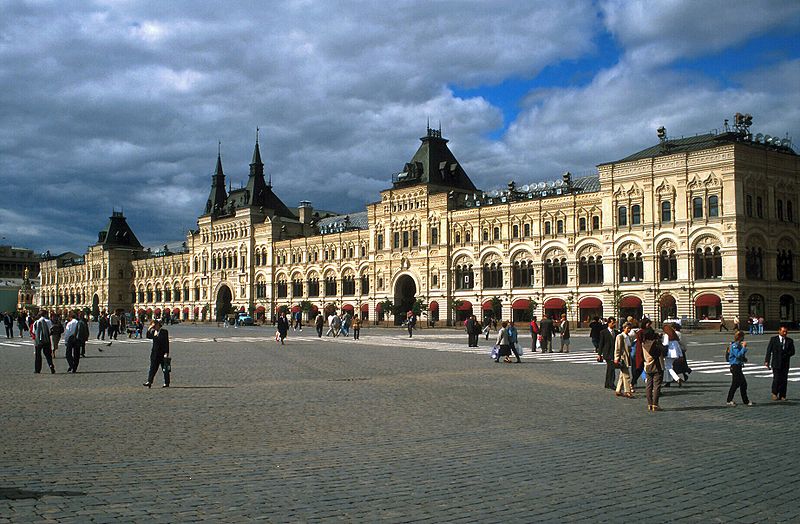
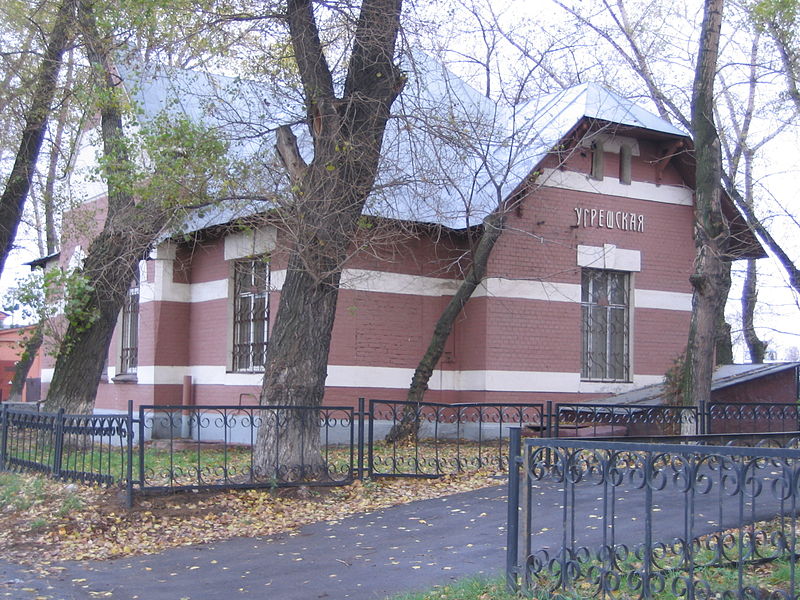
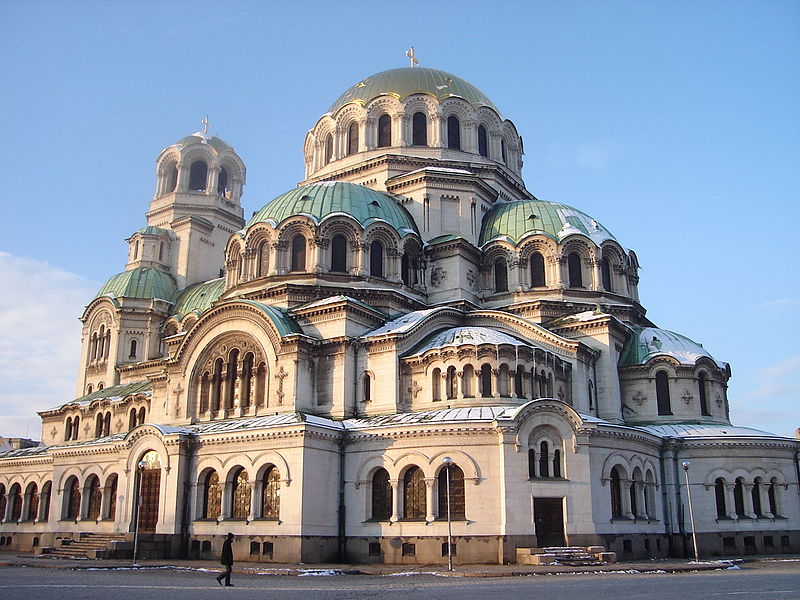
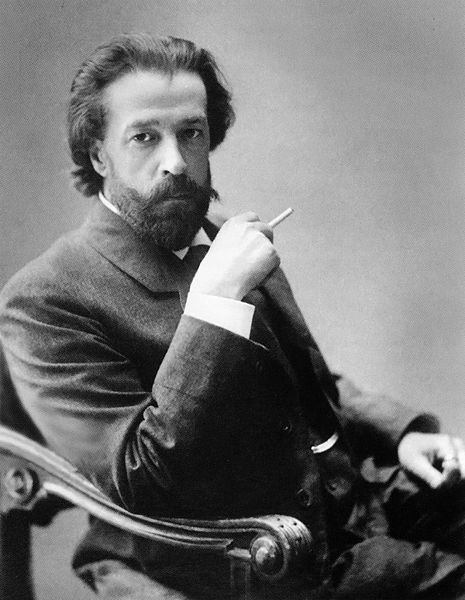
Vladimir Vladimirovich Sherwood (Russian: Владимир Владимирович Шервуд, also spelled Shervud, May 17, 1867 - June 18, 1930), was a Russian architect who worked in Moscow in 1895 - 1914 in Art Nouveau style and modernized classics variant of Russian neoclassical revival that predated modernist architecture of 1920s.
Vladimir Sherwood, junior, was the son of Vladimir Osipovich Sherwood (Владимир Осипович Шервуд, 1832 - 1897), architect of the State Historical Museum in Red Square. His brother Sergei Vladimirovich Sherwood (1858 - 1899) also became an architect but died prematurely; another brother, Leonid Vladimirovich Sherwood (1871 - 1954) became a sculptor based in Saint Petersburg.
Vladimir Sherwood graduated from the Moscow School of Painting, Sculpture and Architecture in 1895, and was employed first as the house architect of Bromley Steel Works (1898 - 1903) and by the Moscow Merchant Society - a business consortium responsible for redevelopment of Kitai-Gorod and Central Squares of Moscow (1903 - 1910). Sherwood is credited with work on the new master plan for Kitai-gorod, partially executed before World War I, although exact extent of his input has not been reliably studied.
His first
independent work was a Gothic revival Reck Mansion
on the Garden Ring (destroyed). It was followed by an
extant apartment block in Smolenskaya Square which remained
Sherwood's only pure example of Art Nouveau. As he gained
experience, popularity of this style faded and Sherwood's
later works gradually moved from simplified Art Nouveau to modernized
classics. His career peaked in the five years
preceding the outbreak of World War I. Sherwood became notable as
the author of numerous rental apartment and office
buildings; three of his projects are listed on the
protected buildings register: 12-14 Novokuznetskaya Street, 7-7 Malaya Polyanka Street (Ivan Shmelyov home), and a
large neoclassical block at 1, Solyanka Street.
Sherwood's best known work, Titov Building, at 4, Staraya Square, was a radical departure from his Art Nouveau practice. Stylistically it was in line with Russian neoclassical revival, however, the design emphasized the steel frame structure and was marked by unusually large glass surfaces providing adequate insulation to deep office floors of this mixed use building. Sherwood refused to use classical order altogether, creating a "classical atmosphere" with carefully measured indents of stone - clad pilasters and cornices, and a modest, purely decorative pediment. Contemporaries marked this style as modernized classics (Russian: модернизированная классика); it was reused by stalinist architecture to the point where Titov Building is frequently mistaken for a mid 20th century government edifice.
In 1920s - 1991 the former Titov Building housed the Central Committee of the Communist Party of the Soviet Union headquarters and became the symbol of party apparatus. It is currently occupied by the Presidential Administration of Russia. Titov building, completed in 1915, remained the last recorded work by Sherwood; he lived the remaining 15 years of his life in Moscow but was not involved in construction projects anymore.
